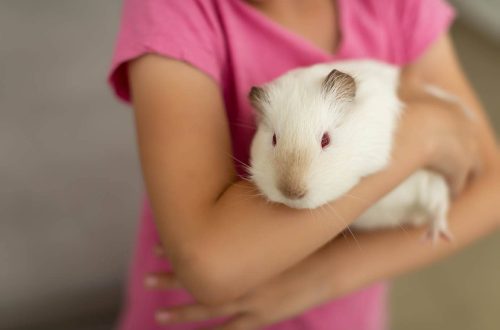
Natural habitat of guinea pigs
Our domestic guinea pig (Cavia arerea porcellus) comes from South America from a wild pig. The genus Cavia combines several species very similar to each other – small rodents known as guinea or guinea pigs, and in their homeland as aperea, aporea, gui. Of course, they have nothing to do with the sea and pigs. It also includes Cavia area from Brazil and Paraguay, Cavia tschudii and Cavia cutleri from the dry valleys of the Andes, Cavia nana from Bolivia, Cavia fulgida from the Amazon basin.
Wild pigs live in a variety of environments – from swampy lowlands in the depths of the mainland to rocky, dry plateaus. Wild pigs differ from domesticated pigs in a lighter body structure and greater mobility. The color of the coat of a wild animal differs sharply from that of domestic animals and has a black-brown color. They move nimbly and quickly, they are most active in the morning and at dusk. They feed at night. Some species dig holes, others build ground shelters from plants, while others use natural shelters, such as rock crevices. They live in packs consisting of several or from ten to twenty individuals led by one of the males. Each flock occupies its own territory, to which an outside pig does not have access. They feed on accessible parts of plants, from roots to seeds. They breed intensively at different times of the year, which is dictated by the protection of the species.
Wild pigs have been domesticated by humans since pre-Inca times. They were bred throughout the Central Andes, both for ritual purposes and for their delicious meat. These rodents were kept at home and fed on leftovers from the table. This is evidenced by drawings on vases and found mummies of guinea pigs. During excavations at one of the archaeological sites north of the central part of the Culebras I coast, originating from the late pre-ceramic period (III-II millennium BC), special premises for guinea pigs were discovered. Stone-lined tunnels were built there, passing between adjacent rooms. Numerous bones of pigs and fish bones found in them indicate that, most likely, fishermen bred rodents in premises convenient for them and fed them with surplus fish from their catch. Although these animals are herbivores, modern Peruvian fishermen still feed them on scraps and leftovers from the kitchen that contain large amounts of fish. The meat of guinea pigs to this day remains a source of valuable protein for the poor Indians of the Andes, while the inhabitants of the coast consider it a delicacy.
Our domestic guinea pig (Cavia arerea porcellus) comes from South America from a wild pig. The genus Cavia combines several species very similar to each other – small rodents known as guinea or guinea pigs, and in their homeland as aperea, aporea, gui. Of course, they have nothing to do with the sea and pigs. It also includes Cavia area from Brazil and Paraguay, Cavia tschudii and Cavia cutleri from the dry valleys of the Andes, Cavia nana from Bolivia, Cavia fulgida from the Amazon basin.
Wild pigs live in a variety of environments – from swampy lowlands in the depths of the mainland to rocky, dry plateaus. Wild pigs differ from domesticated pigs in a lighter body structure and greater mobility. The color of the coat of a wild animal differs sharply from that of domestic animals and has a black-brown color. They move nimbly and quickly, they are most active in the morning and at dusk. They feed at night. Some species dig holes, others build ground shelters from plants, while others use natural shelters, such as rock crevices. They live in packs consisting of several or from ten to twenty individuals led by one of the males. Each flock occupies its own territory, to which an outside pig does not have access. They feed on accessible parts of plants, from roots to seeds. They breed intensively at different times of the year, which is dictated by the protection of the species.
Wild pigs have been domesticated by humans since pre-Inca times. They were bred throughout the Central Andes, both for ritual purposes and for their delicious meat. These rodents were kept at home and fed on leftovers from the table. This is evidenced by drawings on vases and found mummies of guinea pigs. During excavations at one of the archaeological sites north of the central part of the Culebras I coast, originating from the late pre-ceramic period (III-II millennium BC), special premises for guinea pigs were discovered. Stone-lined tunnels were built there, passing between adjacent rooms. Numerous bones of pigs and fish bones found in them indicate that, most likely, fishermen bred rodents in premises convenient for them and fed them with surplus fish from their catch. Although these animals are herbivores, modern Peruvian fishermen still feed them on scraps and leftovers from the kitchen that contain large amounts of fish. The meat of guinea pigs to this day remains a source of valuable protein for the poor Indians of the Andes, while the inhabitants of the coast consider it a delicacy.





